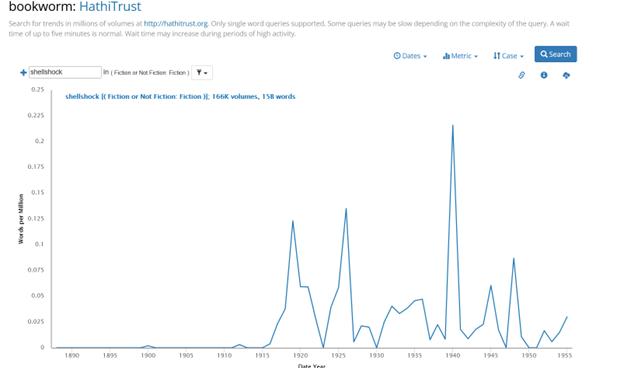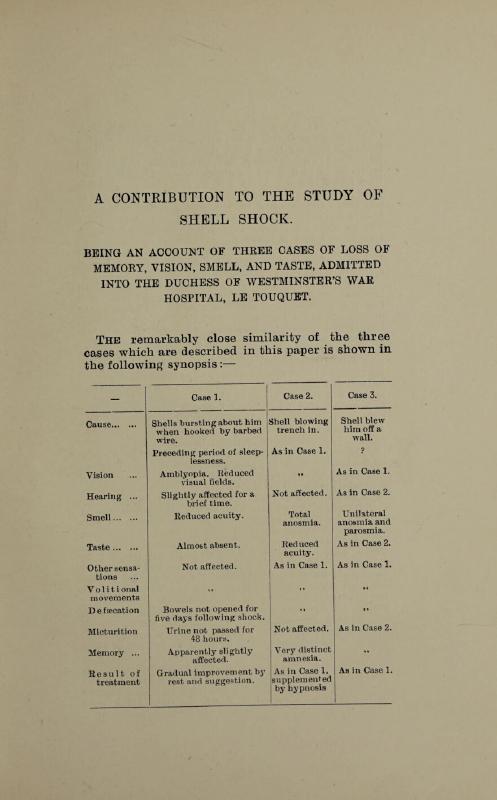"Shell-shock" Across Fiction with the HathiTrust Bookworm Timeline Tool
For this next case study, I chose HathiTrust as they offer a number of open-access texts, which can be downloaded using their collection tool, into comma separated value tables. As a repository, HathiTrust includes content digitized via Google Books and the Internet Archive digitization initiatives, as well as content digitized locally by libraries.
HathiTrust's Bookworm tool allows researchers to search the entire collection for terms across time. Unlike Project Arclight, this project is made up of eighteen million volumes and counting, so I had a much larger sample set with which to experiment.
First, I turned off network smoothing, and isolated the collection to texts that were fictional, which returned the following result. This trend shows a spike trending upwards after 1915, shortly after Henry Myer’s coinage of the term in the pages of the Lancet on February 13th, 1915, and reaching a summit around 1918. There was also a spike in 1925, a rising usage through 1928, and then a number of valleys. The largest spike was in 1940, shortly after the beginning of the Second World War.
This set of trends may reflect the publication history of works which deal with shell-shock. I say “works” deliberately, since in the years which followed the first world war, the diagnosis of shellshock would be reflected in fiction, across novels and poetry. Notably, there is no way for the researcher to isolate by form, so I have no way to tell if fiction also refers to poetry alongside prose, making this tool less useful for literary researchers.
I point to The Great War and Modern Memory by Paul Fussell to show an upward trend in poetry representing the First World War, while Trevor Dodson’s Shell Shock, Memory, and the Novel in the Wake of World War I charts a sudden use of shellshock as a literary device in novels following its coinage in 1915. In 1918, Rebecca West’s Return of the Soldier was published, which features a shell-shocked character. 1925 saw the publication of Virginia Woolf’s Mrs. Dalloway, representing shell-shock in the form of Septimus Smith, a young soldier who commits suicide.
During 1928, noted anti-war novel All Quiet on the Western Front by Erich Maria Remarque was serialized in November, while Dorothy L. Sayers’s novel The Unpleasantness at the Bellona Club, in which a character suffers from shellshock, was also published during this year. Christopher Isherwood's shell shock novel The Memorial was published in 1932. Moreover, Ford Madox Ford’s novel Parade’s End was published in four separately published volumes, including Some Do Not … (1924), No More Parades (1925), A Man Could Stand Up— (1926), and The Last Post (1928), all painting the portrait of a man who suffers from shell-shock’s aftermath both during and after the war. Finally, Mulk Raj Anand’s World War I trilogy – The Village (1939), Across the Black Waters (1940), and The Sword and the Sickle (1942) were published during the second world war, and deal with prejudice against Indian troops by British military officials, which is exemplified by their mismanagement of shellshock and trauma.
I point to these examples as potential points where spikes in shellshock may occur during this search, which prevent me from necessarily making an argument that these results derive only from war poetry or from novels. Duplicates are also included in these searches, which means that if there are many copies of Parade’s End included in the collection, there may be more examples of the terms shell-shock included in the search.

